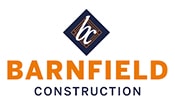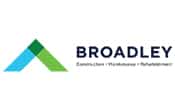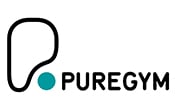Event Noise Monitoring and Noise Management for a Festival.

Sound Testing
We operate a nationwide, UKAS-accredited sound insulation testing programme, providing you with reports for your building control officer with a quick and reliable turnaround.
Sound Testing for Building Regulations.
Building Regulations Sound Testing is required for new dwellings in the United Kingdom, or any residential conversion that creates two adjoining dwellings. Our efficient sound insulation testing protocols fully comply with Part E of the Building Regulations for England and Wales.
Our years of experience mean that your project will be expertly dealt with from start to finish by our expert team of acoustic consultants. You can rest assured that you are in safe hands as we are UKAS Accredited Testing Laboratory No. 8568 for Sound Testing.


What is sound insulation testing?
Sound testing is required to make sure that a residential development can demonstrate acceptable levels of noise attenuation performance. This includes both airborne (i.e. noise transmitted through the air, such as a conversation between people) and impact noise (i.e. noise resulting from an impact on the surface, such as footsteps on the floor).
This means that sound insulation testing essentially assesses if the dwelling provides a reasonable resistance to the passage of sound.
What is involved in Part E sound testing?
Part E of the Building Regulations requires that walls and floors be sound tested between adjoining dwellings to ensure that they meet Part E regulations for acceptable amounts of noise. The exact number of walls requiring testing for Part E will vary depending on the overall size of the development.
However, a typical small to medium development (of under 10 dwellings with similar construction) should require testing that includes; 2 airborne wall tests, 2 airborne floor tests, 2 impact floor tests.

Are you installing new hard floor finishes in a residential dwelling?
If you are installing or altering hard or wooden flooring in a leased residential dwelling then you will need to clarify that your lease allows you to. It is very common for residential leases to contain clauses that restrict alterations to floor finishes, this is normally where carpeted flooring is in place but this also applies to where hard or wooden floor finishes are being altered as well. The wording of the clauses vary substantially so firstly it is important that the wording of the clause is reviewed to ensure it is fully understood what is required. Normally, the clauses will state that the sound insulation of the new floors is required to provide the same resistance to sound as the existing floor.
Most conditions require sound testing prior to works commencing to ascertain the existing performance, consultation with an acoustic consultant and a robust acoustic design for the floor being prepared and then post completion sound testing to ensure the desired sound reduction has been achieved.
It is very challenging to ensure that an existing carpeted floor performs at the same standard as a proposed hard or wooden floor and as such detailed acoustic design and great care is required to ensure compliance with the clause of the lease. We have assisted 100’s of clients in navigating these types of clauses, so please get in touch if you need help.
Sound Testing FAQs
Part E of the Building Regulations in the UK focuses on resistance to the passage of sound within and between buildings. A sound insulation test is required under Part E to ensure that the construction of a building, particularly its walls and floors, meets the specified acoustic performance standards. The primary goal is to minimize the transmission of airborne and impact sound between different spaces, promoting a suitable level of acoustic comfort for occupants.
Sound insulation testing for Approved Document E of the Building Regulations is typically carried out in accordance with the procedures outlined in the relevant British Standard, which is BS EN ISO 140-4:1998 for airborne sound insulation and BS EN ISO 140-7:1998 for impact sound insulation. The following is a general overview of the process:
Types of Sound Test: There are two main types of sound insulation tests: airborne sound tests and impact sound tests. Airborne sound tests measure the transmission of airborne noise (speech, television, music) through walls and floors. Impact sound tests measure the impact sound transmission (footsteps, furniture movement) through floors.
Test Procedure: For airborne sound tests, a loudspeaker emits a steady source of noise in the source room, and the sound level is measured in both the source and the receiver room. For impact sound tests, a tapping machine is used to simulate impact noise in the source room, and the sound level is measured in the receiver room.
Measurements: The measurements are taken in decibels (dB) and recorded for each test point. Results are compared against the specified performance standards outlined in Approved Document E.
Reporting: A detailed report is generated, indicating the performance of each tested partition and whether it meets the required standards. If any failures are identified, recommendations for improvements are provided.
We strongly advise that you get in touch with us at the earliest possible stage for your development to have the best possible chance of passing its sound test. However, there are certain minimum requirements in the progress of the development that will impact our ability to perform sound insulation testing and the likelihood of a development passing. Some general requirements for improving the chances of passing sound testing include:
- Windows & external doors must be installed, glazed and closed
- Ventilation systems should be installed and closed
- Internal doors should be hung
- Walls, floors and ceilings must be completed
- Skirting boards, electrical sockets and light switches should be fitted
- To test Impact sound transmission, there must be no cosmetic flooring fitted
- Rooms in which testing is to be carried out should be empty and tidy
- No trades should be working in the dwelling during the acoustic test
- Access to the properties on both sides of the separating partition is required
- There must be no noisy operations around the test properties during acoustic testing
- 240v (50Hz) mains power is required within the dwellings
Testing costs will ultimately depend on the overall size of the development. We pride ourselves on our expert and acclaimed service, which includes honesty and transparency with all costs associated with sound insulation testing.
This means that sound testing is broken down into two simple areas:
A one-off ‘site fee’ which covers costs for expert engineers, equipment and reporting
A remaining fee based on the number of sound insulation tests required
We also provide impressive savings for bulk testing of multiple developments, as well as discounts for returning clients.
Our unrivalled service includes free, expert advice for helping properties achieve required levels of sound attenuation.
We also charge a site fee only for developments that require re-testing. Simply the use the contact form on this page, or call our offices, to chat about your specific sound insulation testing requirements with our friendly and knowledgeable expert acoustic consultants.
Pre-completion sound testing should be carried out at a stage in the construction process when the building is essentially complete but before the application of decorative finishes. This typically means after the installation of all internal and external doors and windows, but before carpets, curtains, and other finishing materials are added.
The duration of sound insulation testing can vary based on the size and complexity of the building, as well as the number of individual tests required. In general, the testing process itself may take several hours to a full day, depending on factors such as the number of test points and the type of tests being conducted (airborne sound tests or impact sound tests).
Approved Document E states that sound insulation testing should be carried out by a test body with appropriate third party accreditation. Test bodies conducting testing should preferably have UKAS accreditation (or european equivalent) for field measurements. The DCLG also regards members of the ANC registration scheme as suitbaly qualified to carry out pre-completion sound testing.
Flanking sound (or flanking noise) is sound that transmits between spaces indirectly, going over or around, rather than directly through the main separating element. This can allow sound to transmit between spaces even though the main separating element itself provides good acoustic insulation.
Approved document E: Resistance to the passage of sound, defines ‘flanking transmission’ as, ‘Sound transmitted between rooms via flanking elements instead of directly through separating elements or along any path other than the direct path’. It defines a ‘flanking element’ as, ‘Any building element that contributes to sound transmission between rooms in a building that is not a separating floor or separating wall’. A common example of flanking is sound transmitted between two spaces through a floor void (or even a floating screed) that runs under the separating partition, even though the partition provides good acoustic insulation preventing the direct transmission of sound. Flanking can result from both impact sounds and airborne sounds. Any building element that penetrates or circumnavigates a separating element can result in flanking. This might include:
- Windows and doors.
- Flanking ceilings, floors and walls which continue past the separating element into the adjoining space.
- Voids such as wall cavities, suspended ceilings and raised floors.
- Penetrating joists.
- Corridors and other circulation spaces.
- Ductwork and pipework.
- Sockets.
- Poor workmanship.
Flanking should be considered early in the design stage of new developments and detailing should eliminate or minimise the inadvertent downgrading of sound insulation. Junctions between elements in particular can offer a potential flanking route if they are not carefully detailed and constructed. Good briefing, supervision and inspection on site can help to ensure that the quality of workmanship remains high so that details are constructed as designed.
Flanking can be a particular issue where adjoining spaces have different uses, such as; a lecture theatre next to an office, a private room adjacent to a circulation space, or between neighbouring houses with different patterns of occupancy and behaviour. Flanking can be difficult to treat in older buildings, where the addition of sound insulation to one element simply reveals a flanking path through another.
Approved document E of the building regulations: Resistance to the passage of sound, sets out requirements for sound insulation between spaces and provides guidance on how to detail separating elements to avoid flanking.
We will follow the following process:
Lease Review – We will firstly need to review the lease and clarify the wording and present an action plan based on the minimum you require to achieve compliance.
Baseline Sound Testing – The most important sound test is the pre-works sound insulation test to ascertain the existing level of resistance to sound. This test will need to include your current floor finish. To conduct this test we will need access into your neighbours flat below for approximately 2.5 hours.
Acoustic Design Review – We will analyse the sound test results, existing construction detail of the floor and we will review your proposed floor specification. We will present a robust acoustic flooring solution including installation instructions to meet the requirements of the lease. The acoustic design review is imperative to ensuring you install the correct products and that they are installed correctly to achieve the right performance level and we strongly advise it is included in the package.
Post – Completion Sound Testing – When the new flooring is installed, if required by the lease, we will conduct completion test to evidence that the lease requirements have been met. We will provide a technical test report to provide to your management agent.
We also provide acoustic underlay at very competitive prices, check out our range of acoustic underlays and acoustic floating floors.
If your building fails a sound insulation test, it means that the acoustic performance of the constructed elements (such as walls and floors) does not meet the specified standards outlined in the building regulations, such as Approved Document E in the UK. Failing a sound test has several implications, and it typically triggers a series of actions and considerations:
Investigation and Analysis: Work with us to investigate the reasons for the failure. This may involve a detailed analysis of construction details, materials used, and potential flanking paths for sound transmission.
Corrective Measures: Implement corrective measures to address the identified issues. This could involve improving the installation of doors and windows, sealing gaps, using better insulation materials, or making modifications to construction details.
Retesting: After implementing corrective measures, arrange for a retest to verify that the necessary improvements have been made. Retesting is crucial to ensure that the building now meets the required sound insulation standards.
Submission of Results: Submit the revised test results, along with documentation of the corrective measures taken, to the building control authorities. The revised results should demonstrate compliance with the required standards.
Building Control Decision: Building control authorities will review the new test results and documentation. If the revised results demonstrate compliance, the building control authority may issue the necessary certificates or approvals.
You should ensure you select a company with appropriate third party accreditations. You should look out for Sound Testing Companies that hold UKAS or ANC Accreditation. Another consideration would be whether you choose a ‘Testing Only’ or Testing & Consultancy’ sound testing company. Some companies provide a cheap testing only service, which typically means if your sound test fails they cannot help or need to call an acoustic consultant to redo the testing and provide design assistance to resolve the issue.
NOVA Acoustics offer cost effective sound testing at rates competitive with ‘Testing Only’ sound testing companies. We are also acoustic consultants and will be there to help if you are unfortunate enough to fail your sound test. So look no further and call NOVA the No.1 Sound Testing Company in the UK.
Recent Projects
Noise Impact Assessment of a BESS (Battery Energy Storage Site) for planning permission.
Noise Impact Assessment of a Padel Club to support a planning application.
Who we work with













































